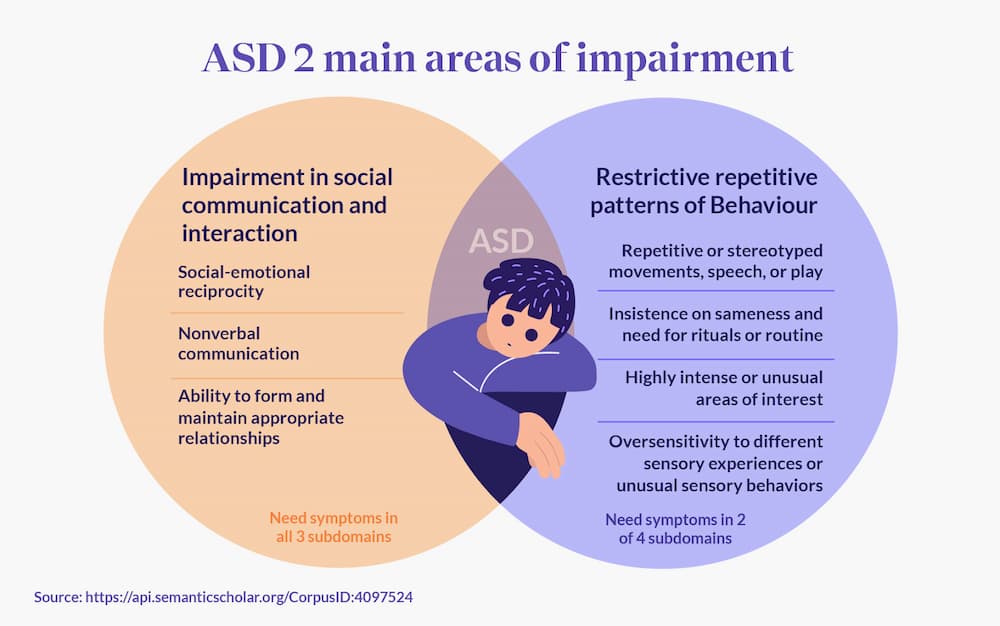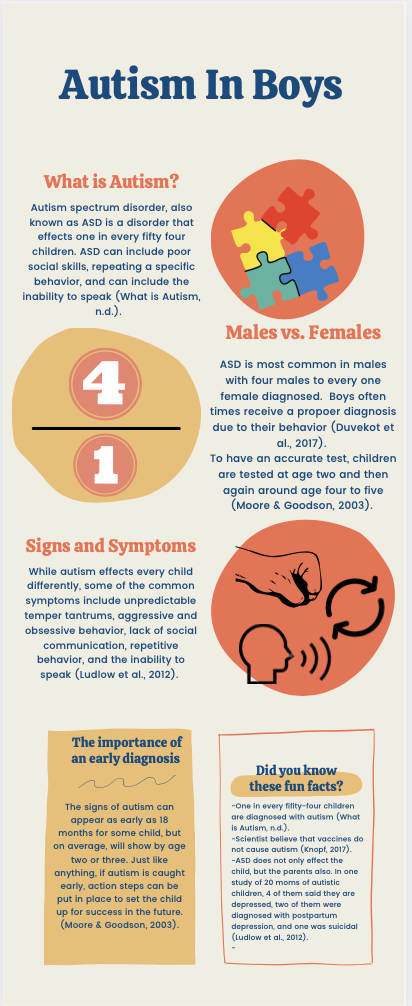How to spot an effective Autism Behavioral Therapy
How to spot an effective Autism Behavioral Therapy
Blog Article
Understanding the Influence of Behavioral Autism on Day-to-day Live and Social Communications
You might not realize just how deeply behavior autism impacts life and social communications. Individuals on the spectrum frequently navigate a globe loaded with interaction obstacles and sensory overload. These obstacles can result in disappointment and isolation, influencing their connections and general well-being. Recognizing these subtleties is vital for promoting helpful environments. What strategies can we apply to create even more comprehensive areas and meaningful connections? The answers could stun you.
Defining Behavior Autism and Its Characteristics
Behavioral autism, commonly described as autism spectrum disorder (ASD), includes a variety of conditions identified by challenges in social communication, interaction, and recurring habits. You may observe that individuals with ASD often struggle to analyze social signs, which can bring about misunderstandings in discussions. They might locate it hard to develop eye get in touch with or take part in little talk, making social situations really feel overwhelming.
Communication troubles can materialize in different means, from postponed speech development to a choice for making use of fewer words. Repeated habits, such as hand-flapping or rocking, can act as coping systems to handle stress and anxiety or sensory overload. These qualities can greatly impact daily life, making it crucial for you to comprehend and support those with ASD. By recognizing these attributes, you can foster an atmosphere that advertises approval and urges effective communication, assisting people with autism prosper in their everyday interactions.
The Spectrum of Autism: Recognizing Variability in Habits
Autism range problem (ASD) isn't a one-size-fits-all diagnosis; it varies extensively among people. You may notice that some people with ASD exhibit mild signs, while others might deal with a lot more considerable obstacles. This variability can show up in actions, rate of interests, and sensory level of sensitivities. You may experience individuals who are very spoken and involve quickly in discussions, while others could favor solitary tasks or interact non-verbally.
Furthermore, the method people with ASD reply to sensory input can differ considerably; some could be bewildered by bright lights or loud noises, whereas others prosper in boosting environments. The range additionally consists of distinctions in social interactions; some people might battle to analyze social cues, while others browse social settings with loved one ease. Comprehending this variability is essential, as it helps you value everyone's special experience and dressmaker assistance to their details needs, promoting a more inclusive setting for everyone.
Interaction Obstacles Encountered by Individuals With Autism
When you engage with individuals on the autism spectrum, you may notice their one-of-a-kind communication difficulties. They often face troubles with both nonverbal and spoken hints, which can affect their social communications. Recognizing these obstacles is important for cultivating much better connections and support.

Verbal Interaction Problems
Numerous people on the autism spectrum experience verbal communication difficulties that can significantly affect their day-to-day communications. You may locate it challenging to reveal your thoughts, sensations, or requires clearly. This can result in irritation for both you and those around you, as misunderstandings occur. You might fight with initiating discussions, keeping a subject, or recognizing subtleties in speech. Usually, you might favor making use of basic language or repetitive expressions, which can limit your capacity to participate in deeper discussions. Your rate, volume, or tone may not straighten with social expectations, triggering others to misinterpret your purposes. Identifying these challenges can help you and your assistance network create techniques to boost communication and foster much better links with others in your day-to-day live.
Nonverbal Interaction Barriers
Verbal interaction isn't the only challenge individuals on the autism spectrum face; nonverbal communication obstacles can be just as significant. These challenges can lead to misunderstandings or misconceptions of social hints, making interactions feel confusing or overwhelming. By dealing with nonverbal communication, you can locate methods to enhance your social experiences and improve your total top quality of life.
Social Interaction Influences
Social interactions can commonly feel frustrating because of the unique interaction challenges encountered by individuals with autism. You could battle with interpreting social hints, making it difficult to comprehend sarcasm or body movement. This can lead to misconceptions or awkward minutes in conversations. In addition, starting and maintaining discussions might feel challenging, creating anxiousness in social circumstances. You may favor structured atmospheres, making spontaneous communications uneasy. It's likewise usual to experience trouble in participating in tiny talk, which can prevent creating new friendships. Recognizing these obstacles can assist you find methods to boost interaction, such as practicing social skills in safe settings or making use of aesthetic help - Autism Therapist. Recognizing your requirements enables you to navigate social interactions with higher self-confidence and ease.
Social Interaction and Partnership Structure in Autism
While building connections can be challenging for people with autism, comprehending their unique point of views and interaction styles can foster purposeful links. You might notice that many people on the spectrum choose direct communication and may battle with social hints or little talk. By being simple in your interactions, you can aid produce an environment where they feel comfy.
Involving in shared passions can additionally offer as a bridge to deeper links. Whether it's a leisure activity, a favorite program, or a common interest, these usual strings can open up doors to friendship.
Every Day Life Regimen: Navigating Difficulties and Methods
Steering every day life regimens can be especially testing for individuals with autism, particularly when unexpected modifications occur. You might locate convenience in having an organized timetable, as it assists you anticipate what's following. It's normal to feel anxious or overloaded when disruptions take place. To browse these difficulties, think about applying visual timetables or checklists. These tools can provide clearness and peace of mind.
Establishing a routine that consists of sensory breaks can also be valuable. You can prepare time-outs throughout your day to charge. It's vital to interact with those around you, allowing them recognize your preferences and needs. This aids produce an understanding setting.
Lastly, technique mindfulness methods to manage stress and stress and anxiety. Simple breathing exercises or basing strategies can make a significant difference. By incorporating these approaches, you can boost your day-to-day regimen and lessen interruptions, making life feel a lot more convenient.
Strengths and Abilities of People on the Autism Range
Understanding daily life regimens is simply one element of the autism experience. Lots of people on the autism spectrum possess remarkable toughness and capabilities that set them apart.
Moreover, your memory abilities commonly beam, particularly in areas of passion. Autism Behavioral Therapy. This propensity for keeping information can make you he has a good point a useful resource in see areas like science, art, or modern technology. You might also exhibit strong visual thinking, enabling you to imagine complex ideas and resolve issues artistically
Additionally, your special viewpoint on the globe can promote empathy and understanding in others, enhancing social communications. Accepting these staminas not just improves your self-confidence yet likewise helps others appreciate the varied abilities you offer the table.
Developing Inclusive Atmospheres for Individuals With Autism
Developing comprehensive atmospheres for individuals with autism begins with making sensory-friendly areas that satisfy their one-of-a-kind demands. You can likewise foster chances for social interaction, assisting to build relationships and links. By making these changes, you'll add to an extra welcoming ambience for every person.
Creating Sensory-Friendly Spaces
While designing sensory-friendly rooms, it's essential to show on the special demands of individuals with autism. Integrate silent zones where people can retreat and charge when overwhelmed. Include visual routines or clear signs to help individuals navigate the area with confidence.
Promoting Social Communication Opportunities
Designing sensory-friendly spaces not only addresses individual comfort but additionally establishes the phase for significant social communications among individuals with autism. To advertise these interactions, develop inclusive atmospheres that welcome engagement. Arrange structured activities, like art classes or group games, that encourage collaboration without overwhelming sensory input. Usage aesthetic aids and clear communication to assist every person engage comfortably. Encourage peer mentoring, pairing people with autism with supportive peers that can lead them through social scenarios. Furthermore, think about hosting regular area occasions that commemorate neurodiversity, cultivating acceptance and understanding amongst all participants. By implementing these methods, you can boost social chances, aiding people with autism build friendships and reinforce their social abilities in a risk-free, inviting atmosphere.

Often Asked Inquiries
Just How Can Buddies Assistance Somebody With Behavioral Autism?
You can support a good friend with behavioral autism by being patient, listening actively, and appreciating their borders. Take part in tasks they enjoy, interact openly, and create a comfortable atmosphere where they really feel valued and recognized.
What Resources Are Offered for Moms And Dads of Kid With Autism?
You can discover numerous sources for moms and dads of youngsters with autism, including support system, academic internet sites, and regional area services. Connecting with various other moms and dads can additionally offer beneficial insights and shared experiences to aid browse difficulties.
Can Behavioral Autism Modification With Time?

Yes, behavioral autism can transform with time. You may see changes in interaction, social skills, and habits as your child grows. Early intervention and assistance typically play important roles in these developing changes.
Just How Do Sensory Sensitivities Impact Life?
Sensory level of sensitivities can make day-to-day experiences overwhelming. You could battle with loud noises or brilliant lights, leading to anxiety or evasion. Discovering environments that fit your demands can greatly improve your convenience and total daily life.
What Prevail Misconceptions About Behavioral Autism?
You might think behavior autism check these guys out just influences interaction abilities, yet it's more facility. Several think people lack compassion or knowledge, which isn't true. Recognizing these misunderstandings aids foster acceptance and support for those on the spectrum.
Behavioral autism, frequently referred to as autism spectrum disorder (ASD), incorporates a variety of problems identified by challenges in social communication, communication, and repeated habits.Social communications can often really feel overwhelming due to the one-of-a-kind communication difficulties dealt with by individuals with autism.Designing sensory-friendly rooms not just addresses individual comfort yet additionally sets the phase for purposeful social interactions amongst individuals with autism. Urge peer mentoring, coupling individuals with autism with helpful peers who can guide them with social scenarios. By carrying out these strategies, you can enhance social opportunities, helping people with autism develop friendships and reinforce their social skills in a risk-free, inviting atmosphere.
Report this page